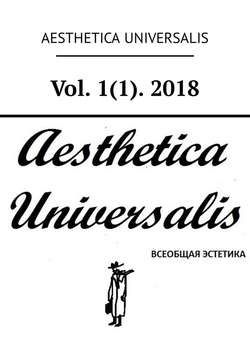Читать книгу Vol. 1(1). 2018 - Сергей Анатольевич Дзикевич - Страница 8
THEORY / ТЕОРИЯ
Christoph Wulf1
IMAGES OF THE HUMAN BEING: THE VISUALISATION OF THE INVISIBLE
ОглавлениеIt is in mimetic processes that images of the outside world are transferred to our imaginary. Our imaginary constructs images which shape the outside world (Wulf 2018). These images also include those we make of ourselves, images in which and by means of which we try to make sense of ourselves. People create images of themselves in all cultures and historical periods. They need these images to communicate about themselves and to understand themselves. Images of the human being are designs and projections of the human being. They are formed in order to visualise representations of the human being or individual aspects of a person. These representations are simplifications of human diversity and complexity in illustrations. A «productive moment» is portrayed here in these representations, as the discussion about the Laocoon statue shows. Historical developments and interpretative variants are not displayed in such iconic «productive moments». The special nature of an image lies in the concentration on one moment and in the suggested evidence, but the limits of the iconic representation are also revealed therein. Human images are always simplifications, which, despite their simplifying character, are extremely effective. The power structures of a society which are often difficult to see are incorporated in the construction of the human images. Human images are the result of differentiated inclusion and exclusion processes. Desires, norms and values are conveyed in human images. Human images are aimed at the normalisation of people. Social and cultural institutions, as well as religions, utopias and world views, use human images to portray their conceptions of humans and to embed their ideas in the imaginary and in the actions of humans.
Such human images are clearly expressed, for example in the sculptures of Ancient Greece, in which the ideal of the good and beautiful, the Kolokagathia, the unit of physical beauty and spiritual quality, is expressed. Also in the Christian Middle Ages there are human images in which the devout, godly person is represented. The biblia pauperum in the churches of the Middle Ages show this clearly. We find representations of godly people subdivided according to status into monks, nobles and peasants, in which the hierarchical structures of the society are also reflected. Nationalism in the 19th century and in the first half of the 20th century highlighted numerous idealising images of, for example, the «Germans» and the «French», which became role models for education and an honourable life. Socialism in the Soviet Union and in Eastern Europe also tried to embed a certain human image in the imagination of the young generation. Today the European Union also endeavours to achieve the human image of a free, independent democratic citizen as a model of human development and education in Europe (Wulf 1995, 1998).
